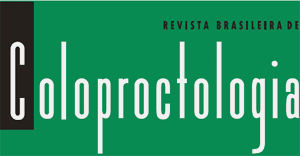The evaluation and management of the acute lower digestive hemorrhage has been modified with the recent development of new techniques and devices. The aim of this manuscript was to demonstrate with simplicity how to treat the patients with acute lower intestinal hemorrhage. Diseases of the large bowel account for the ¼ of the cases of digestive hemorrhages on the hospital admission and have as main etiological agents the diverticula, in the diverticular disease, and small vascular malformation, in the angiodysplasias. Sometime, it can be seen as a life-threatening condition, however, most of the times, the hemorrhage stops spontaneously. The serious circulatory disturbances are not common; the most frequent signs are the decrease in hemoglobin occurring on about one half of patients and some form of circulatory disturbance as orthostatic changes in 30%; as syncope in 10% and as cardiovascular collapse in 9%. However, the age group, the conditions of the senility, the eventually associated diseases and the lack of material and human resources to handle with that kind of problem are the reasons for concern. The simple clinical approach with a well elaborated history; the physical examination released with attention and objectivity, the inclusion of the proctologic exam, the obligatory readiness for an endoscope for colonoscopy, the basic knowledge on the event are necessary and, in most of the times, enough for the good professional acting in the elaboration of the cares that it should be given to those patient ones.
Acute lower intestinal bleeding; clinical presentation; management; colonoscopy
